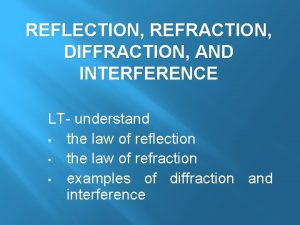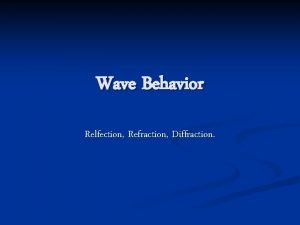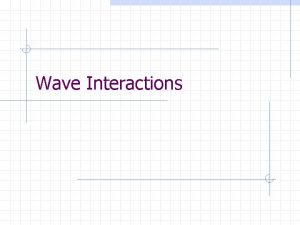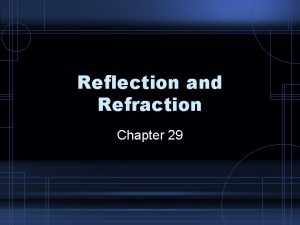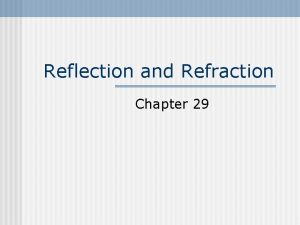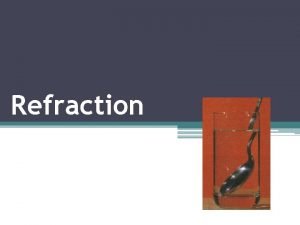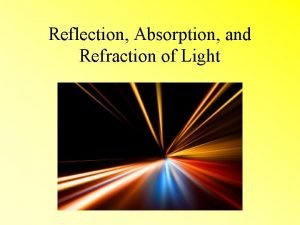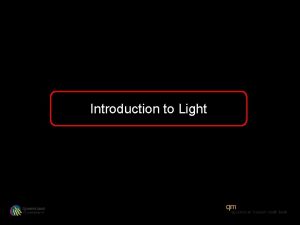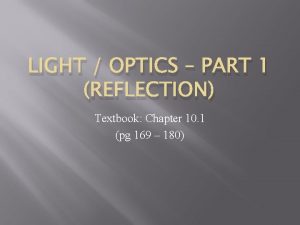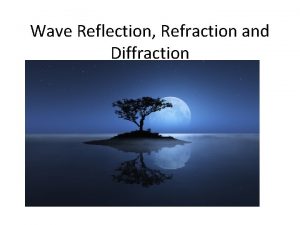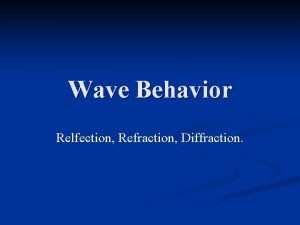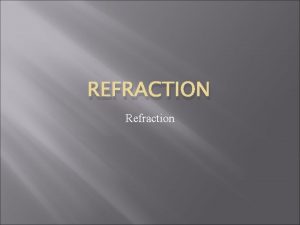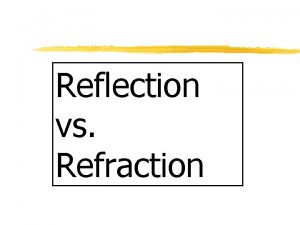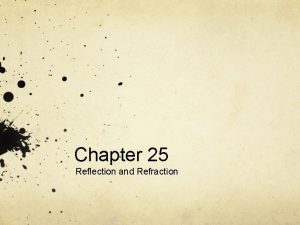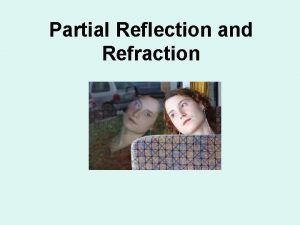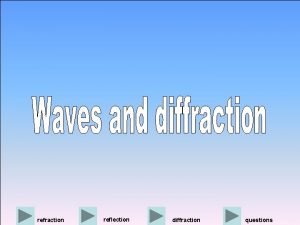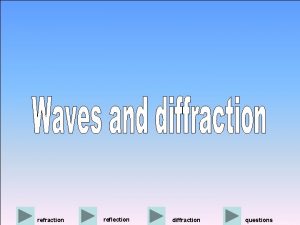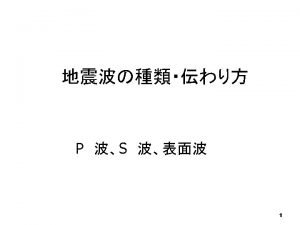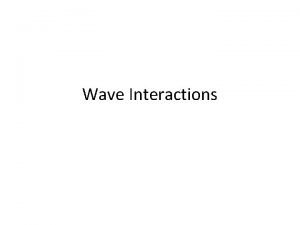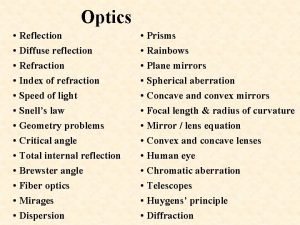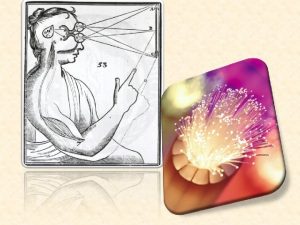Wave Interactions Reflection Diffraction and Refraction How do
















- Slides: 16

Wave Interactions

Reflection, Diffraction, and Refraction How do waves behave when they hit a boundary, when they pass around an edge or opening, and when they pass from one medium to another? When a wave hits a surface or a boundary, the wave bounces back. When a wave passes the edge of an object or passes through an opening, the wave bends. A wave also bends when it passes from one medium to another at an angle.

Reflection, Diffraction, and Refraction Reflection occurs when a wave meets a boundary. Reflection – the bouncing back of a ray of light, sound, or heat when the ray hits a surface that it does not go through Examples: The reflection of light waves in a lake can create a mirror image of a landscape. Water boat. waves are reflected when they hit the side of a

Reflection, Diffraction, and Refraction Reflected wave video https: //youtu. be/DALnh 5 XC 66 k

Reflection, Diffraction, and Refraction Diffraction is the bending of waves around an edge. Diffraction – a change in the direction of a wave when the wave finds an obstacle or an edge, such as an opening Examples: Water waves diffract around a block in a tank of water Sound waves passing through a door diffract

Diffraction

Reflection, Diffraction, and Refraction Waves also bend by refraction Refraction – the bending of a wavefront as the wavefront passes between two substances in which the speed of the wave differs All waves are refracted when they pass from one medium to another at an angle

Refraction

Interference What happens when two waves are in the same location? When several waves are in the same location, they combine to produce a single, new wave that is different from the original waves. This interaction is called interference. Interference – the combination of two or more waves that result in a single wave.

Interference Constructive interference increases amplitude Constructive interference – a superposition of two or more waves that produces an intensity equal to the sum of the intensities of the individuals waves Destructive interference decreases amplitude Destructive interference – a superposition of two or more waves that produce an intensity equal to the difference of the intensities of the individual waves

Interference


Interference of light waves creates colorful displays When two waves of slightly different frequencies interfere with each other, they produce beats.

Standing waves How are standing waves formed? A standing wave causes the medium to vibrate in a stationary pattern that resembles a loop or a series of loops. Standing wave – a pattern of vibration that simulates a wave that is standing still

Standing waves have nodes and antinodes Each loop of a standing wave is separated from the next loop by points that have no vibration, called nodes Midway between the nodes lie points of maximum vibration, called antinodes

Standing Wave
 Reflection refraction diffraction interference
Reflection refraction diffraction interference Refraction vs diffraction
Refraction vs diffraction When a wave strikes an object and bounces off
When a wave strikes an object and bounces off Reflection wave interactions
Reflection wave interactions Rainbow total internal reflection
Rainbow total internal reflection Chapter 29 reflection and refraction
Chapter 29 reflection and refraction What is the message of the poem
What is the message of the poem Refraction examples
Refraction examples Reflection refraction transmission and absorption of light
Reflection refraction transmission and absorption of light Light energy bill nye
Light energy bill nye Invictus poem imagery
Invictus poem imagery Introduction of light
Introduction of light Single ray
Single ray Venn diagram of geometric optics and physical optics
Venn diagram of geometric optics and physical optics Venn diagram of reflection and refraction
Venn diagram of reflection and refraction What is ligh
What is ligh Learning task 1 reflection and refraction
Learning task 1 reflection and refraction
